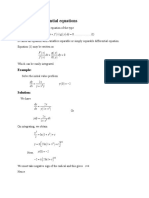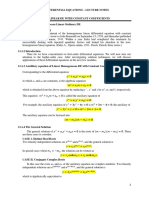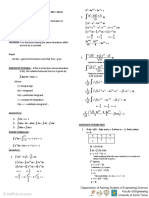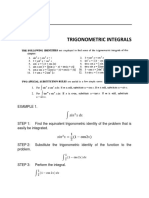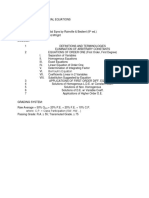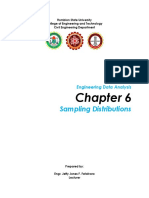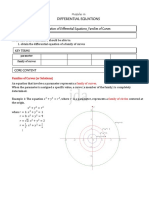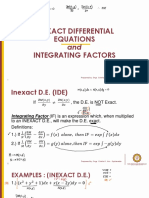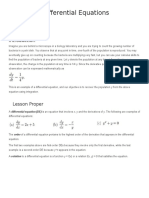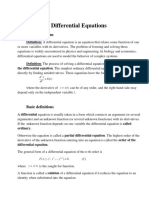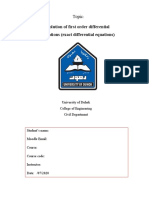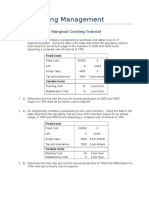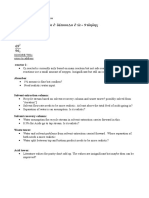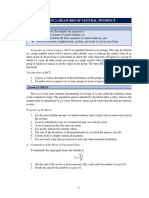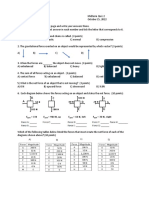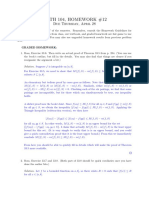50% found this document useful (2 votes)
1K views50 pagesSeparation of Variables PowerPoint
This document discusses separable differential equations and their solutions. It begins by defining a separable differential equation as one that can be written in the form dy/dx = p(x)q(y), where p(x) involves only the independent variable x and q(y) involves only the dependent variable y. It then explains the solution method of separating the variables so they are on different sides and integrating both sides. Examples are provided to demonstrate obtaining the general solution and using an initial condition to find the particular solution for a specific problem.
Uploaded by
hazimraadCopyright
© © All Rights Reserved
We take content rights seriously. If you suspect this is your content, claim it here.
Available Formats
Download as PPTX, PDF, TXT or read online on Scribd
50% found this document useful (2 votes)
1K views50 pagesSeparation of Variables PowerPoint
This document discusses separable differential equations and their solutions. It begins by defining a separable differential equation as one that can be written in the form dy/dx = p(x)q(y), where p(x) involves only the independent variable x and q(y) involves only the dependent variable y. It then explains the solution method of separating the variables so they are on different sides and integrating both sides. Examples are provided to demonstrate obtaining the general solution and using an initial condition to find the particular solution for a specific problem.
Uploaded by
hazimraadCopyright
© © All Rights Reserved
We take content rights seriously. If you suspect this is your content, claim it here.
Available Formats
Download as PPTX, PDF, TXT or read online on Scribd
/ 50
